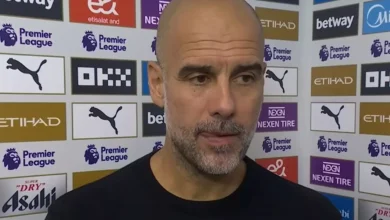Arsenal’s Last Stand: The Alexander Isak Transfer Window

In what could prove to be the most significant transfer development of the summer window, Arsenal Football Club may have been presented with an unprecedented opportunity to finally secure the signature of Alexander Isak. The Swedish striker, who has become Newcastle United’s crown jewel since his arrival on Tyneside, could potentially be available for transfer following emerging reports that the Magpies have reignited their pursuit of Bundesliga sensation Hugo Ekitike.
This development represents far more than merely another transfer rumor in the endless cycle of speculation that dominates modern football. For Arsenal, it could constitute their final realistic chance to acquire a player who has consistently topped their wish list, a striker whose blend of technical excellence, physical prowess, and Premier League experience makes him an almost perfect fit for Mikel Arteta’s evolving tactical blueprint.
The interconnected nature of this potential transfer saga highlights the complex web of modern football recruitment, where one club’s pursuit of a player can create ripple effects across multiple leagues and nations. Newcastle’s renewed interest in Ekitike doesn’t merely represent their own transfer ambitions; it could fundamentally alter the striker market across Europe’s elite leagues.
Since his arrival at St James’ Park in August 2022, Alexander Isak has systematically dismantled any lingering doubts about his ability to thrive in the Premier League’s unforgiving environment. His record of 62 goals in 109 appearances tells only part of the story of a player who has evolved from a promising talent into one of Europe’s most feared strikers.
The Swedish international’s goal-scoring prowess extends far beyond mere statistics. His ability to find the net in crucial moments, combined with his knack for scoring different types of goals, demonstrates the complete striker’s mentality that separates elite performers from talented also-rans. Whether unleashing thunderous strikes from distance, displaying delicate touches in crowded penalty areas, or timing his runs to perfection, Isak has showcased a versatility that makes him virtually unmarkable.
His physical transformation since arriving in England has been equally remarkable. The lanky striker who initially appeared potentially vulnerable to Premier League physicality has developed into a player capable of holding his own against the division’s most imposing defenders. This evolution speaks to both his dedication to improvement and his natural ability to adapt to different tactical and physical demands.
What makes Isak particularly dangerous is his unpredictability. Unlike strikers who rely primarily on one specific skill set, the Swedish international can hurt opponents in multiple ways. His pace allows him to stretch defenses vertically, his technical ability enables him to drop deep and create chances for teammates, and his aerial prowess provides an additional dimension that few defenders can neutralize consistently
Arsenal’s interest in Isak represents more than opportunistic recruitment; it reflects a carefully considered strategic imperative that has been developing over multiple transfer windows. The Gunners’ transformation under Mikel Arteta has been remarkable, evolving from a club struggling to secure European qualification into genuine title contenders. However, this progression has highlighted rather than hidden their need for a world-class striker.
The North London club’s attacking philosophy under Arteta demands a striker who can operate effectively in multiple systems while maintaining the work rate and pressing intensity that has become synonymous with their approach. Isak’s ability to press from the front, track back defensively, and still maintain his primary goal-scoring threat makes him an ideal candidate for this demanding role.
Arsenal’s current attacking options, while talented, lack the combination of Premier League experience and proven goal-scoring ability that Isak brings. The Swedish striker’s familiarity with English football’s unique demands eliminates much of the risk typically associated with high-profile signings, while his age profile suggests he could provide both immediate impact and long-term value
The tactical flexibility that Isak would provide cannot be overstated. His ability to play as a lone striker, in partnership with another forward, or even dropping into deeper areas to create overloads gives Arteta multiple options for different tactical scenarios. This versatility becomes particularly valuable in a long season where squad rotation and tactical adaptation often determine success.
Arsenal’s pursuit of Isak occurs within a highly competitive landscape that includes some of Europe’s most ambitious clubs. Liverpool and Chelsea’s reported interest in the Swedish striker reflects the premium placed on proven Premier League performers, particularly those operating in the striker position where quality options remain frustratingly scarce.
Liverpool’s interest stems from their need to plan for the future while maintaining present competitiveness. The Reds’ forward line, while still productive, is aging, and club hierarchy recognizes the importance of securing succession plans before they become urgent necessities. Isak’s profile as a player entering his prime years makes him an attractive long-term investment, while his immediate quality ensures he could contribute meaningfully from his first appearance.
Chelsea’s pursuit represents a different type of desperation. Despite significant investment in attacking players over recent transfer windows, the Blues have struggled to find consistency in their striker position. Multiple high-profile signings have failed to deliver expected returns, making a proven performer like Isak particularly appealing. His Premier League experience removes much of the uncertainty that has characterized Chelsea’s recent striker acquisitions.
The competition for Isak’s signature also extends beyond England’s borders. European giants have been monitoring his development, recognizing that quality strikers with his combination of attributes rarely become available. This international interest adds another layer of complexity to any potential transfer, as clubs must compete not only on financial terms but also on sporting project appeal.
Hugo Ekitike’s emergence as a genuine transfer target for Newcastle United represents the catalyst that could make Isak’s departure possible. The 22-year-old French striker has developed significantly since his move to the Bundesliga, demonstrating the rapid improvement that often characterizes players making successful transitions between leagues.
Ekitike’s appeal to Newcastle extends beyond his current ability to his potential for future development. At 22, he represents the type of long-term investment that aligns with modern recruitment philosophy, where clubs seek to balance immediate performance with future value appreciation. His pace, movement, and finishing ability have drawn comparisons to some of Europe’s most promising young forwards.
The French striker’s Bundesliga experience provides him with a solid foundation for adapting to Premier League demands. German football’s tactical sophistication and physical intensity serve as excellent preparation for English football, while his goal-scoring record suggests he possesses the clinical edge necessary for success at the highest level.
Newcastle’s interest in Ekitike creates a fascinating strategic dilemma. While Isak has proven himself as a consistent Premier League performer, Ekitike represents a different kind of opportunity – a younger player with significant upside who could potentially offer better value in both sporting and financial terms. The decision facing Newcastle’s hierarchy involves weighing proven quality against potential ceiling.
The financial implications of any potential Isak transfer reflect the broader realities of modern football’s inflated transfer market. The Swedish striker’s proven Premier League pedigree, combined with his age and contract situation, positions him as one of the summer’s most valuable assets. For Arsenal, securing his signature would require a financial commitment that ranks among the largest in club history.
Newcastle’s position as sellers provides them with significant leverage in any negotiations. Having invested heavily in Isak and witnessed his development into a key player, they would understandably demand a return that reflects both their initial investment and his subsequent value appreciation. The club’s improved financial position, bolstered by their ownership structure, means they are under no pressure to sell below their valuation.
Arsenal’s financial capabilities have evolved significantly in recent years, but they remain mindful of Financial Fair Play regulations and the need to balance investment with sustainability. The club’s recent transfer activity suggests willingness to make significant investments in the right players, but Isak’s potential price tag would likely require careful consideration of their broader strategic objectives.
The economic dynamics extend beyond transfer fees to encompass wage structures, agent fees, and the broader financial impact of squad enhancement. Arsenal’s ability to compete financially with clubs like Liverpool and Chelsea may ultimately determine their chances of securing Isak’s signature, regardless of other factors.
Isak’s potential integration into Arsenal’s tactical system represents one of the most intriguing aspects of this transfer saga. The Swedish striker’s skill set appears almost perfectly aligned with the demands of Arteta’s evolving tactical approach, suggesting a seamless transition that could enhance the team’s overall effectiveness.
Arsenal’s preference for fluid attacking movements and quick passing combinations would suit Isak’s intelligent running and technical ability. His capacity to drift into wide areas, drop deep to collect possession, and still maintain a constant goal threat provides the kind of tactical flexibility that modern football demands. This versatility would allow Arteta to deploy various formations and tactical approaches without sacrificing attacking potency.
The striker’s pressing ability and defensive work rate align perfectly with Arsenal’s high-intensity approach. His willingness to track back and contribute defensively distinguishes him from purely goal-focused strikers, making him valuable even in phases when the team doesn’t have possession. This work rate becomes particularly important in big games where every player’s defensive contribution can prove decisive.
Isak’s aerial ability adds another dimension to Arsenal’s attacking arsenal. While the team has developed effective patterns of play through intricate passing and movement, having a genuine aerial threat provides alternative routes to goal that could prove crucial against defensively organized opponents. His height and timing make him dangerous from set pieces, an area where Arsenal has sought improvement.
The potential transfer of Alexander Isak occurs within a broader context of Premier League evolution, where the division’s financial power and global appeal continue to attract the world’s best players. The Swedish striker’s development since arriving in England exemplifies the league’s ability to elevate players to new levels of performance.
Premier League clubs’ pursuit of proven performers reflects lessons learned from previous transfer windows where promising players from other leagues struggled to adapt to English football’s unique demands. Isak’s successful transition eliminates much of this risk, making him particularly valuable in a market where certainty commands premium prices.
The competitive balance within the Premier League has intensified significantly in recent years, with multiple clubs capable of challenging for major honors. In this environment, the acquisition of a player like Isak could prove decisive in determining final league positions and trophy distribution. His goals could be the difference between Champions League qualification and Europa League participation, with all the financial and sporting implications that entails.
Newcastle United’s position in this transfer saga reflects their own strategic evolution under their current ownership. The club has transformed from relegation battlers into European contenders, but this progression has created new challenges around squad management and player retention.
The potential sale of Isak would represent a significant decision for Newcastle’s hierarchy, balancing immediate sporting impact against long-term strategic planning. While the striker has become integral to their attacking approach, his departure could provide resources for broader squad enhancement that might ultimately benefit the team’s overall competitiveness.
Newcastle’s interest in Ekitike suggests they view the French striker as a suitable replacement who could provide similar goal-scoring threat while offering additional upside potential. This calculation involves significant risk, as replacing a proven performer with a promising talent doesn’t guarantee equivalent results.
The club’s Champions League ambitions add another layer of complexity to any potential Isak sale. European competition demands squad depth and quality, making the loss of a key player potentially devastating unless adequately replaced. Newcastle’s ability to secure Ekitike and integrate him successfully could determine whether selling Isak proves strategically sound.
The timing of any potential Isak transfer becomes crucial as the summer window progresses. Transfer negotiations of this magnitude require careful coordination between multiple parties, with each club needing to balance incoming and outgoing movements to maintain squad balance.
Arsenal’s position as potential buyers requires them to move decisively once any opportunity presents itself. The competitive interest from other clubs means that hesitation could prove costly, particularly if Liverpool or Chelsea can offer more attractive packages. The Gunners’ preparation for various scenarios could determine their ability to capitalize on Newcastle’s Ekitike pursuit. Newcastle’s timeline revolves around their ability to secure Ekitike before potentially sanctioning Isak’s departure. The interconnected nature of these moves means that delays in one negotiation could impact the entire chain, potentially leaving clubs with inadequate time to complete alternative arrangements.
Arsenal’s potential final opportunity to sign Alexander Isak represents more than another transfer story; it could define the club’s trajectory for years to come. The Swedish striker’s proven ability, tactical suitability, and Premier League experience make him an ideal target for a club with genuine title aspirations.
The convergence of factors that could make this transfer possible – Newcastle’s interest in Ekitike, Arsenal’s financial capability, and the striker’s apparent compatibility with their tactical approach – creates a unique opportunity that may not arise again. The competitive landscape ensures that any potential deal would require swift action and significant investment.
For Arsenal supporters, the prospect of finally securing their long-term striking target represents the kind of statement signing that could elevate the club to the next level. The investment required would be substantial, but the potential returns in terms of goals, tactical flexibility, and competitive advancement could justify such expenditure.
The coming weeks will likely prove decisive in determining whether Arsenal can capitalize on this opportunity or whether Isak will remain at Newcastle or move elsewhere. What seems certain is that the Swedish striker’s future will have significant implications for multiple Premier League clubs and could reshape the competitive landscape for seasons to come.
As the transfer window reaches its crucial phase, all eyes will be on Newcastle’s pursuit of Ekitike and whether it creates the opening Arsenal needs to finally secure their long-term striking target. The next chapter in this evolving saga promises to be as compelling as any in recent transfer history, with consequences that could extend far beyond a single summer window.















